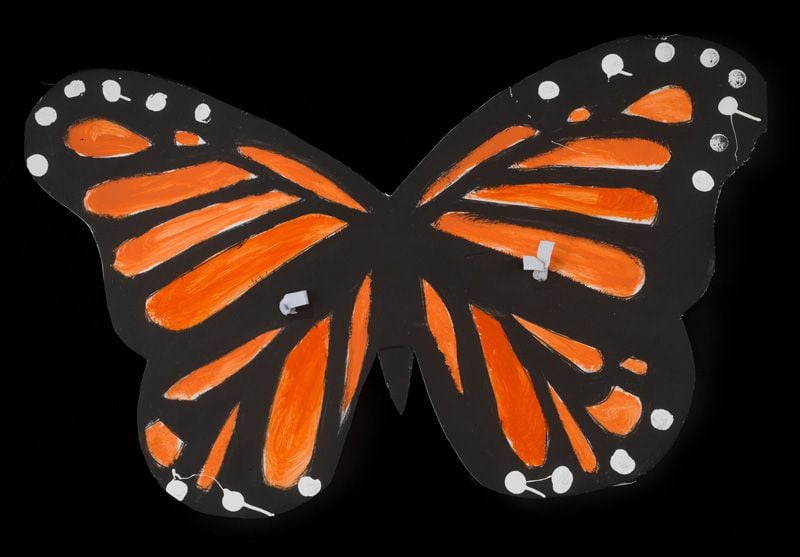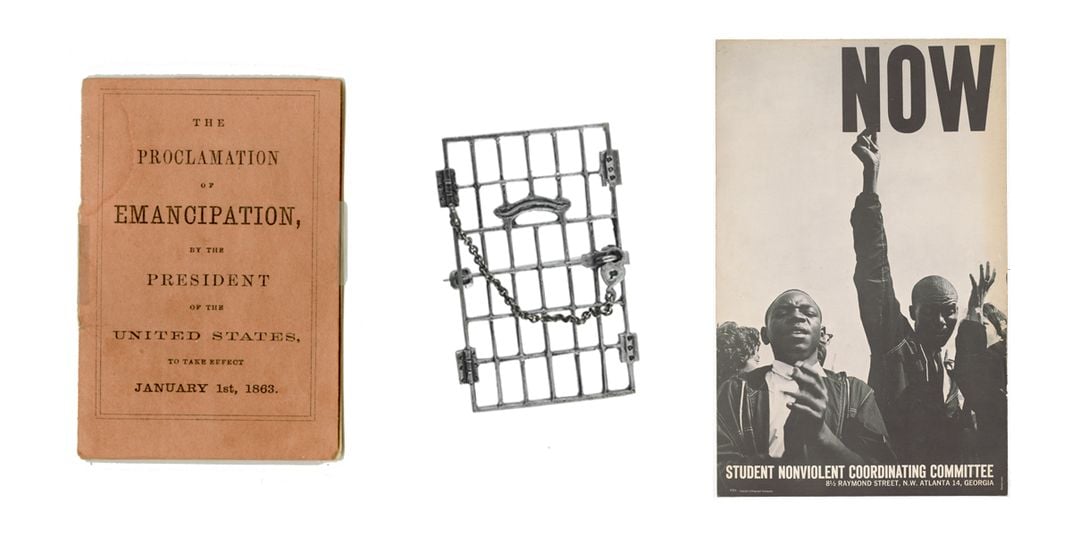NATIONAL MUSEUM OF AMERICAN HISTORY
How Butterfly Wings Helped a New Collecting Initiative Take Flight
It’s perhaps unusual—but not unprecedented—that people without citizenship papers can effect change in government policy.
/https://tf-cmsv2-smithsonianmag-media.s3.amazonaws.com/filer_public/3c/40/3c4058e2-aeae-4a48-ad40-045c0d2a8baa/monarch_wings.jpg)
The museum has created a new collecting initiative focused on how undocumented activists are leading fights for political representation. On face value, it seems unusual that people without citizenship could be a force in government. It’s unusual but not unprecedented. In fact, these new acquisitions will add to existing collections that highlight how people—without citizenship or voting rights—have effected change and expanded mainstream democratic practices throughout our history. These collections and the incoming acquisitions will reflect the fact that it’s perhaps unusual, but not unprecedented that people without citizenship papers can effect change in government policy.
Over the next two years, a team of historians will travel to six sites to learn how undocumented people mobilized and gained traction from 2000 to the present. By collecting objects and oral histories, the initiative will record the processes by which these undocumented activists found ways to participate in democracy.
We caught up with the team to learn more about what they are hoping to discover.
How did this project start?
Our collecting began right here in front of the museum. On March 5, 2018, a group of young activists gathered outside the National Museum of American History as part of a demonstration that brought thousands to Washington, D.C. Just six months prior, President Donald Trump announced that the policy Deferred Action for Childhood Arrivals, more commonly known as DACA, would be rescinded. In response, young people and their allies marched to press Congress for support in passing the Development, Relief, and Education for Alien Minors Act—the DREAM Act.
Two of our curators went out to observe and collect. Curator Mireya Loza struck up a conversation with a young woman from Nebraska who wore homemade, painted butterfly wings. As curators, we wanted to add the wings to the collection. But the team also recognized that we had to think bigger to document the scope and impact of this movement. The young woman’s story spoke to a significant fact: that undocumented people live and work in every state. We realized that if we stayed in D.C. and focused on big marches, we would only be scratching the surface of a much bigger story. The power (and the urgency) of this movement seemed to lay at the local level and we set out to explore this. The wings were the spark of a new collecting initiative, New Paths to Change: Undocumented Immigrant Activism, 2000 to the present.

What does this moment teach us about American history?
We were struck by how political movements led by undocumented organizers resonated with our existing collections. At the museum, political history curators have a long tradition of collecting democracy in action. This movement seemed particularly significant because of how impactful undocumented organizers have been. They gained enough political momentum to shape federal policy and gain at place at the table with the Obama administration. This set of actions resulted in DACA, a policy memorandum announced by President Barack Obama on June 15, 2012. The memorandum states that people who came to the United States as children younger than 16, having met several requirements, can obtain deferred action for a period of two years, subject to renewal. Undocumented organizers helped get DACA on the table. Activists without citizenship getting attention from a presidential administration doesn’t happen very often, and we want to learn how they mobilized. From the DREAM Act, to DACA, to issues around criminalization, undocumented organizers have shaped policies, influenced elections, re-framed debates about immigration, and sparked national conversations about exclusion and belonging.
These objects and oral histories will join a robust political history collection that documents the robust history of national political debate. Our collections document how people participate in democracy. We do this by collecting political campaigns, voting rights, and a wide variety of grassroots actions.
In particular, the undocumented organizing material will complement other collections reflecting other moments in our nation’s history in which people without the vote transformed the nature of citizenship —such as the Civil War and Reconstruction, woman suffrage, and the civil rights movements. Pursuing collections related to these political movements is part of the museum’s commitment to documenting how our democratic process works and changes.
These objects will also join the museum’s collections that relate to immigration, dating back to our nation’s founding.

What do you mean when you say “undocumented” and “undocumented organizing”?
The collecting initiative defines the word “undocumented” to mean lacking authorized legal documents or having a liminal (temporary) protective status (such as DACA) to reside in the United States.
Undocumented organizing consists of social, political, and cultural movements led by undocumented people. Until recently, most undocumented people avoided mainstream politics. Established immigrant rights groups advocated on their behalf. This began to change, and by 2008, undocumented organizers had formed their own movements.
Who are you collecting from?
Our team is reaching out to individuals and organizations involved in key moments, such as the well-known campaigns for the DREAM Act and DACA.
We are also broadening our understanding of undocumented organizing by learning from people who originally became politically active through those well-known campaigns and are now engaged in issues such as deportation and criminalization.
In addition to collecting objects, we are recording life history interviews with organizers who have participated in local, regional, and national campaigns within this people’s movement. These interviews are known as oral histories. The audio and transcriptions of these interviews will live in the Archives Center, where they will be preserved and made accessible to the public.
Where are you collecting?
We are collecting on two fronts: the national level and the local level. Undocumented organizing strategies are often developed on the ground to respond to rapidly changing local and state policies. To fully understand the effectiveness of undocumented organizers, our team had to take an in-depth look at a variety of sites. While this collection can never be comprehensive, the initiative focuses on six specific sites to recognize the differences and variations of strategies, policies, and ideologies that impact how people organize. Those sites are North Carolina, Southern California, Washington, D.C., Nebraska, Chicago, and Mexico City. Mexico City provides an opportunity to recognize the reality of some undocumented organizers who have voluntarily returned or been deported, and how they are advocating for themselves in their home country based on learned tactics and influences of the undocumented organizing in the United States. The project is guided by the expertise of community leaders, scholars, and undocumented organizers.
Who should I contact to donate an object?
You can reach our team at [email protected].
The collecting team includes Nancy Bercaw, Patricia Arteaga, and José Centeno-Meléndez. Nancy Bercaw and Patricia Arteaga were interviewed for this piece.
The collecting initiative received federal support from the Latino Initiatives Pool, administered by the Smithsonian Latino Center.
More Information
DACA
The Deferred Action for Childhood Arrivals (DACA) is a policy memorandum announced by President Barack Obama on June 15, 2012. The memorandum states that people who came to the United States as children (younger than 16) and met several requirements can obtain deferred action for a period of two years, subject to renewal. Applicants would be eligible for a work authorization. Unlike federal legislation, DACA does not provide a pathway toward citizenship. DACA came to be because of a push from community leaders and activists when the DREAM Act of 2010 came five votes short in the Senate.
DREAM Act
First introduced in Congress in 2001, the Development, Relief and Education for Alien Minors Act (DREAM Act) would provide a pathway towards citizenship for undocumented youth who came to the United States as young children and met stringent conditions. The undocumented youth were dubbed as “DREAMers,” a nod to the acronym for the act. For almost two decades, and with slight variations, the bill has received bipartisan support but has yet to pass legislatively.
This post was originally published on the National Museum of American History's blog on February 21, 2020. Read the original version here.
